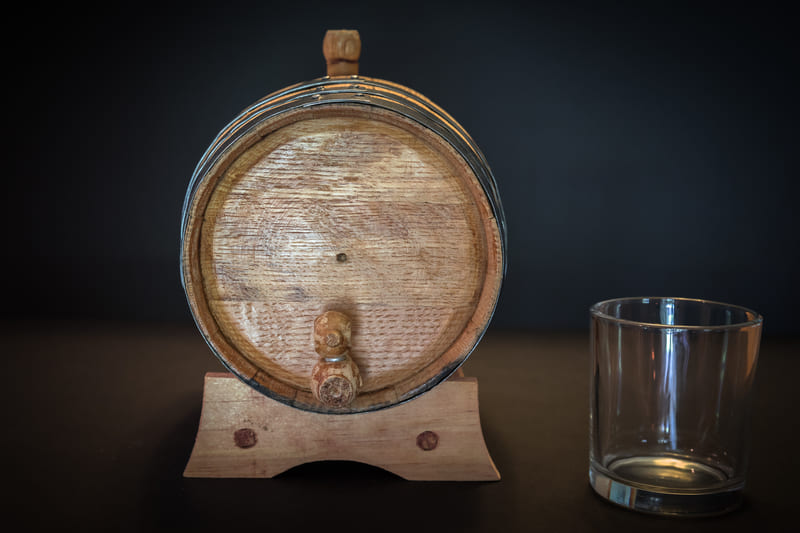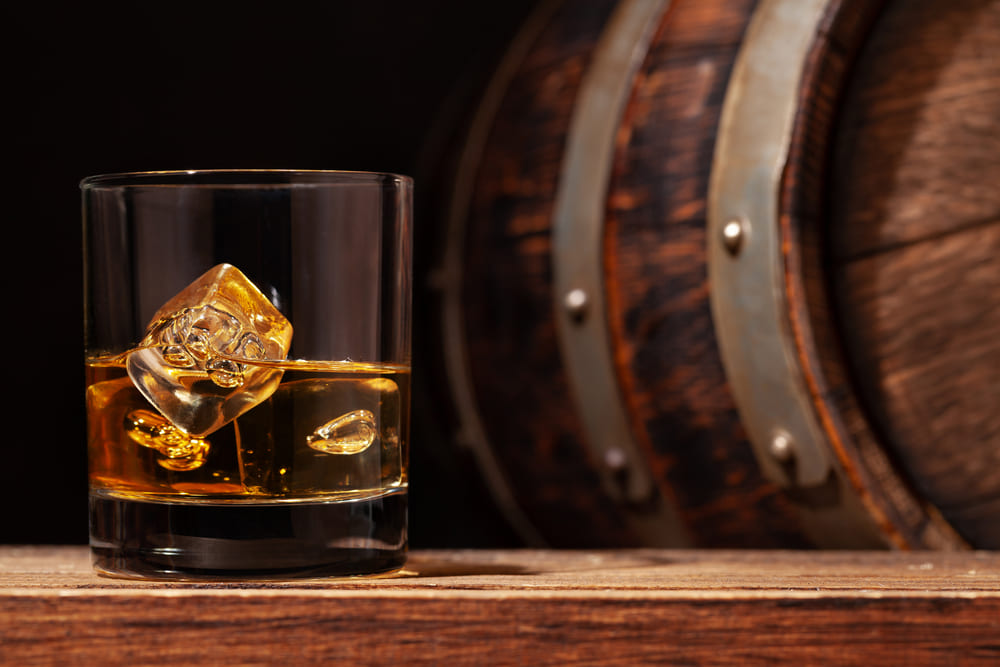Making bourbon at home isn’t anything new; in fact, when it first came into existence, bourbon was made in home conditions.
As you probably know, whiskey was a spirit created by monks for medicinal purposes.
They used what they had to make the spirit, and what they had was definitely not professional equipment.
Therefore, if you want to make bourbon at home, you can do so with what you have, plus a few things you will need.
The most valuable tool to make bourbon at home is knowledge, so before you venture into it, make sure you are well-educated in the subject of bourbon.
Bourbon making at home isn’t a process that tolerates improvisation, so you better know what you are doing and have everything you need lined up and ready to use.
There are many recipes for making bourbon at home, but you also need the procedure closely described so that you know what comes when.
In this article, I will give you a guide on making bourbon at home so that you can make it on your own and enjoy it with your favorite people.
How To Guide
The bourbon-making procedure consists of a series of steps you need to follow in order to have a successful venture.
Don’t focus on the procedure as a whole, as it can easily overwhelm you. Instead, you should concentrate on each step as it comes and see that you do it correctly.
The first thing you need to do way before daring to make bourbon at home is to educate yourself. You will need a lot more info, but to break it down, here are the most important things to remember.
Bourbon needs a 51% corn in the mash bill, so make sure you acquire this percentage. The making process of bourbon is made up of the following steps: mixing the raw ingredients, fermentation, straining, distilling, aging, diluting, and bottling.
You should, of course, go into further detail, but the above paragraphs summarize what you need to know before you start.
In this section, I will explain each of the steps and let you know what you will need for each of them.
Mixing the Raw Ingredients
In addition to the 51% corn in the mash bill, the other grains you need for bourbon are rye and barley. For this step, you will need a large bucket, at least 5 gallons.
To give you an idea about the quantities, I suggest you use about 6-7 lbs of corn, which will make up the 51% of the mash bill. Use about 3-4 pounds of rye and malted barley (together) and 5-6 gallons of water.
The ingredients you don’t need to measure are toasted oak chips and distillers yeast. Use your best judgment for these, as adding too much or too little won’t have a negative impact on your bourbon in any other sense, except for intensifying or mildening the flavor, both of which can be easily fixed.
In addition to the bucket, you will also need nut milk bags to strain the mixture when the time comes, as well as a mill to grind the corn.
These ingredients are for American-style bourbon, so if you want another bourbon type, you will need to adjust the recipe.
Grind the corn and throw the mill in the bucket along with the barley, rye, and toasted oak chips. Mix the grains well, making sure there are no one-grain portions in the bucket. Heat up the water, but don’t boil it. When it is hot, pour it into the bucket over the grains and stir.
Place the bucket on the hot plate you used to heat up the water and continue stirring. Right before the mixture boils, remove it from the hot plate, and don’t let it cook further. This process will release sugar from the grains, which is essential to make alcohol.
The grain and water mix should seem mushy and pudding-like. You will also see a sugary liquid appear on the surface and that is your sign to remove the bucket from the plate.
Fermentation
This step requires big jugs as you will be collecting the cooked mash in them to kick off the fermentation process.
Before distributing the mash into the jars, add the distiller’s yeast to the bucket and mix it well so that there is no portion of the mash where yeast hasn’t penetrated.
Be especially thorough with this process because as the mash cools down, it gets stickier, so there will be mash lumps that are harder to split. Therefore, you should put in some extra effort to mix the mash with the yeast.
Once the yeast is mixed with the mash, it is time to pour it into the jars. Carefully distribute the mash ensuring that the jars contain roughly the same amount of mash. Close the jars and let the fermentation process happen on its own.
During the fermentation process, do not disturb the jars, and don’t expose the mash to the elements by removing the lids. You should only observe what’s going on and not participate in it.
About 24 to 48 hours after you’ve filled the jars there should be bubbles inside the mash indicating that the fermentation process has begun.
If there are no bubbles, it means that things have gone array somewhere and you need to start everything over.
The fermentation process lasts about two weeks, during which you shouldn’t disturb the jarred mash.
Once the fermentation is over, strain the mixture using the nut milk bags and collect the liquid into a large vessel.
Distillation
Although not very demanding, as the process has a path of its own and you don’t have much to do with it, the distillation is tricky as it has the biggest technical needs. Namely, you cannot make do without a distillation pot.
You can, of course, make one yourself, but if you are new to distilling, I would advise you to purchase a home distillation kit. As I said before, bourbon-making doesn’t tolerate improvisation.
You should distill the mash at medium temperature and give the process time. The distillation process has four stages: foreshots, heads, hearts, and tails. When it reaches the hearts stage, the spirit is safe to drink.
Age
For a bourbon to be bourbon, you need to age it for at least two years in oak barrels. Let it mature for at least two years. If you don’t have oak barrels, use any oak container you have at your disposal. Pour your drink in the vessel and close it.
Dilute
Diluting is a way to balance the bourbon. After distillation, it is way too intense, and it needs to be toned down. You can dilute the spirit before or after aging. Just mix it with clear filtered water to get the intensity you prefer.
Bottle
The final stage of the bourbon-making process is the bottling. After it has been aged and diluted, bottle your bourbon and seal the necks. Now your bourbon is ready to drink.
Can I Make My Own Bourbon?
In theory, everyone can make their own bourbon, but not everybody does. Bourbon-making is a process that takes knowledge and skill as well as equipment. Therefore to make your own bourbon, you need to educate yourself well and have the necessary tools.
Moreover, bourbon-making doesn’t give you immediate gratification, as the drink is ready for consumption at least two years later. So, if you are prepared to dedicate a large portion of your time to learning and are patient enough, bourbon-making is the thing for you.
On the other hand, if you don’t want to invest the necessary time, effort, and patience, you should run to the store and buy yourself a bottle.
What Are The Ingredients For Making Bourbon?
To make bourbon, you need corn, rye, barley, water, distillers yeast, and toasted oak chips.
Is It Legal To Make Bourbon At Home?
While people of drinking age are allowed to make wine or beer for personal needs, home distilleries are strictly prohibited.
This means that it is illegal to make bourbon at home. However, making your own bourbon at home is still possible if you manage to obtain the proper license.
License holders are allowed to distill whiskey at home as long as they don’t use the spirit for commercial purposes, for which they need another license allowing them to make it a business.
If you have a license, you can make bourbon at home and use it for yourself and family members, but under no circumstances are you allowed to make money off of it.


